Minimum Work In Two Stage Compression With Intercooling
The circumstances affecting the work of compression might be studied by the use of steady flow system and T–s diagram of the figure shown below. As illustrated in the figure, an ideal gas is compressed from the preliminary state p1 T1 to px, it is then chilled at constant pressure to Ty, and then compressed from px, Ty to p2. Specified p1, T1, Ty and p2, it is preferred to compute the value of px that gives lowest work.
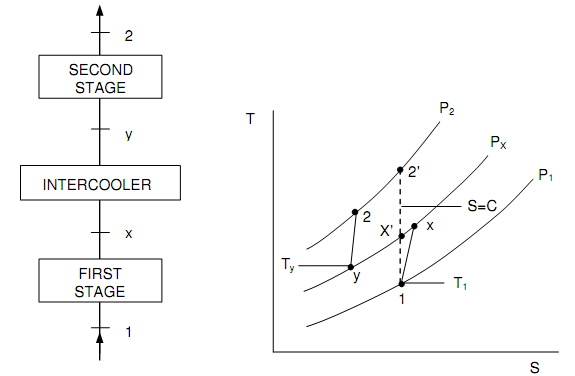
Figure: T – s Plot of Two-stage Compression procedure
Let assume the adiabatic compression efficiencies of the two-stages be correspondingly ηc1 and ηc2.
The work of compression
wc = w1 + w2
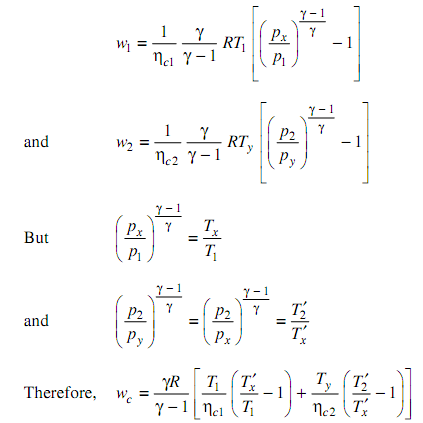
On taking the derivative with respect to Tx′ and setting it equivalent to zero (noting that, T1T2′ and Ty are constant,
dwc/dT’x = 0
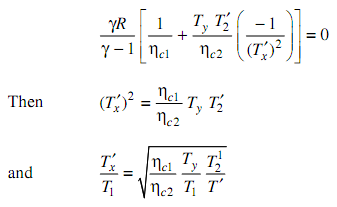
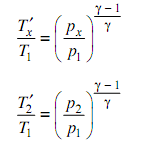
Hence, for minimum work in two phase compression of a perfect gas with inter-cooling to a fixed temperature Ty,

For special condition of Ty = T1 and ηc1 = ηc2, which is frequently taken as standard of comparison, the need for minimum work is

Also for this special situation the condition of minimum work is the condition of equivalent work in the two phases.
Whenever three phases of equivalent effectiveness are employed, with inter-cooling to the preliminary temperature at two points as shown in figure below, the condition of minimum work and of equivalent division of work among phases is,
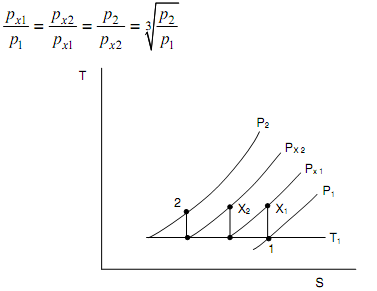
Figure: Three-phase Compression with Inter-cooling